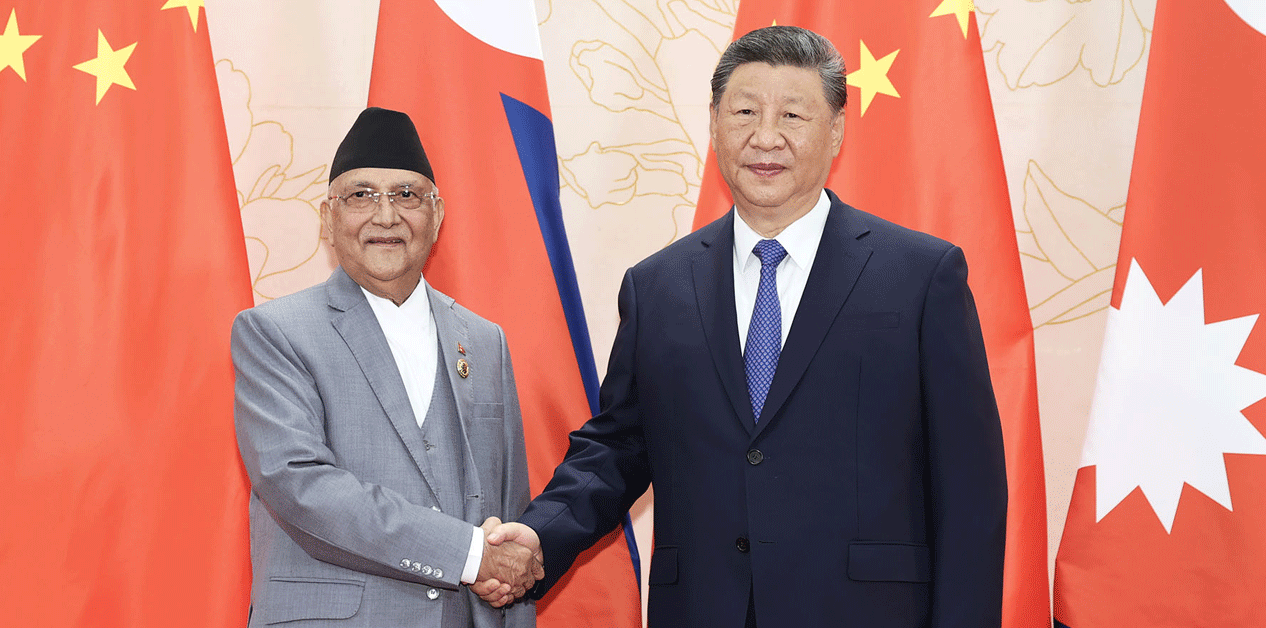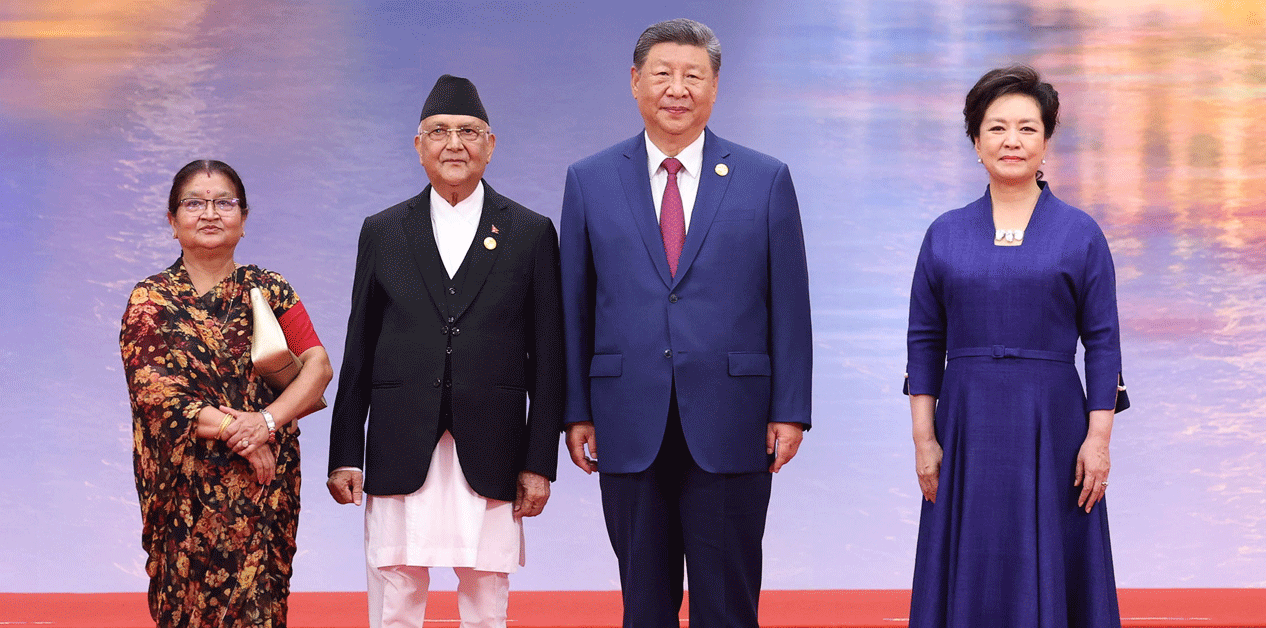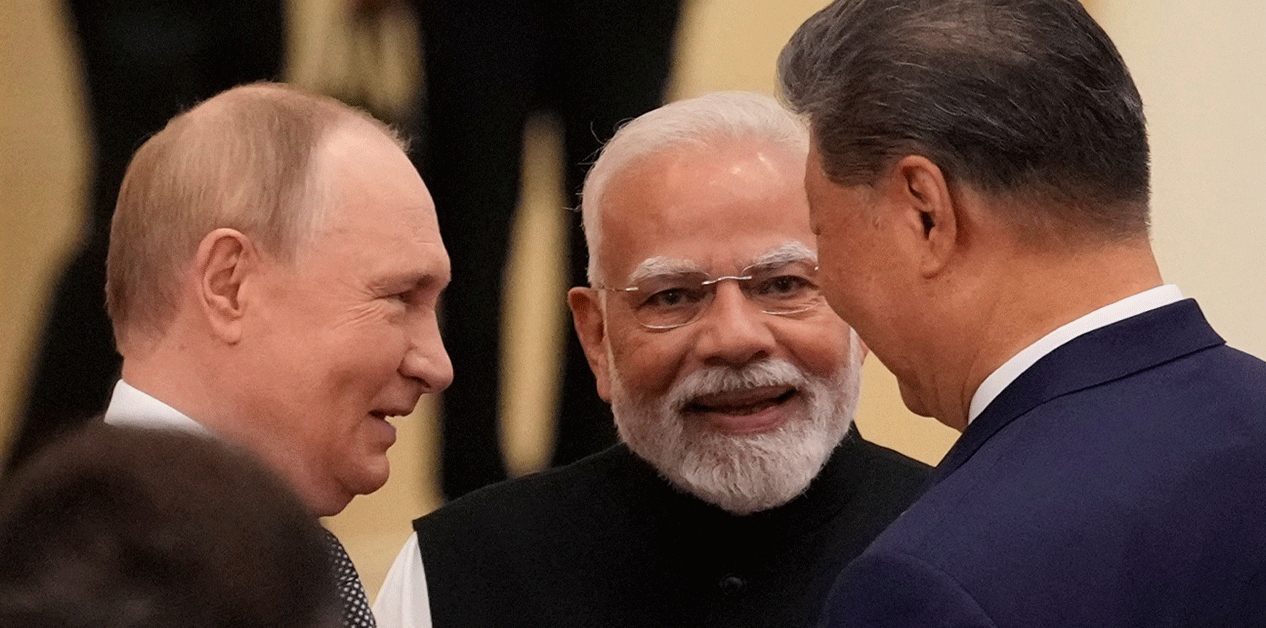

Prime Minister KP Sharma Oli’s claim that he raised the issue of Lipulekh and Limpiyadhura during the Shanghai Cooperation Organization (SCO) meeting in Tianjin, China, seems to be part of a calculated effort to bolster his political image. His secretariat appears focused on enhancing his public persona, particularly through social media. UML supporters have been expressing their admiration by posting graphics and reels on their Facebook profiles, portraying Oli as a strong nationalist leader.
Based on statements given by Oli’s economic advisor, Dr. Yubaraj Khatiwada, the mention of Lipulekh and Limpiyadhura seems strategically aimed at reviving the “Oli brand” and reinforcing his leadership credentials.
Nepal’s invitation to the SCO is significant, and its participation underscores its standing in regional diplomacy. Notably, India didn’t oppose Nepal’s presence at the forum, even though it was hosted by China. This could signal a shift in India’s diplomatic posture—suggesting that New Delhi may now adopt a more respectful approach toward Nepal amid evolving global geopolitics.
Meanwhile, Oli’s scheduled participation in China’s military parade on September 3—marking the 80th anniversary of the end of World War II—has also sparked conversation. His team has been promoting this as a historic moment, noting that he will be the third Nepali leader after King Mahendra Shah and Tanka Prasad Acharya to attend such an event.
In China, Oli has seized the opportunity to reinforce his narrative of defending Nepal’s “international leadership status” and “territorial independence.” However, Nepal must tread carefully. Participation in the parade should not be perceived as diplomatically offensive to Japan, given the historical context.
This raises important questions: Will Nepal’s involvement in the SCO and its presence at the military parade affect its commitment to a non-aligned foreign policy? And what implications might this have for Nepal–Japan relations? These remain open for debate.

Chinese President Xi Jinping and Prime Minister KP Sharma Oli (2nd from L), accompanied by their spouses, at the SCO Summit. Photo: Xinhua/RSS
The Shanghai Cooperation Organization (SCO) — representing half of the world’s population, a quarter of its landmass, and around a quarter of global GDP — is increasingly viewed as a decisive platform in shaping the international balance of power. This year’s summit is the largest in the organization’s history, and naturally, Nepal’s participation, particularly Prime Minister Oli’s presence, is being portrayed as a notable diplomatic milestone.
The attention surrounding Oli’s involvement has grown, especially after Indian Prime Minister Narendra Modi’s brief interaction with him went public on the social media platform X. It’s not surprising that Team Oli sees this moment as political capital, with some in India possibly perceiving that Oli has gained momentum in the regional sphere.
The Purpose of the SCO
The SCO was founded in June 2001, led by China and Russia, with the aim of curbing the influence of Western alliances such as NATO. However, the 9/11 attacks in the United States later that year shifted global priorities, bringing security and anti-terrorism to the forefront of the global agenda. In response, the SCO realigned its focus toward regional security, counter-terrorism, and strategic cooperation.
Since Xi Jinping assumed China’s presidency in 2013, Beijing has increasingly used the SCO as a tool to further its strategic interests. One clear example is the annual military parade held on September 3, which, since 2015, has evolved into a powerful display of China’s military strength and symbolic influence on the global stage.
To grasp the connection between the Shanghai Cooperation Organization (SCO) and China’s Victory Day military parade, one must look back 80 years. During World War II, China—under Chiang Kai-shek—was part of the ‘Big Four’ Allied Powers alongside the US, UK, and Soviet Union. With the later inclusion of France, this alliance became the ‘Big Five’. China played a crucial role in keeping Japanese forces occupied on the Asian front, which eased pressure on Allied forces elsewhere. Eventually, the Axis powers—Japan, Germany, and Italy—were defeated.
Following the war, China emerged with enhanced international status, becoming a founding member of the United Nations and securing a permanent seat on the UN Security Council. However, Chinese leadership has long felt that the country’s wartime contributions have been downplayed in Western narratives. As a result, President Xi Jinping has emphasized commemorating Victory Day through the annual military parade, asserting China’s rightful place in global history.
While the SCO was initially established as a strategic alliance to counterbalance Western influence, its forum now primarily showcases the leadership and geopolitical ambitions of powerful member states like China, India, and Russia. For smaller countries like Nepal, participation remains largely symbolic. Prime Minister KP Sharma Oli’s attendance at the summit has certainly elevated his international profile, but in terms of tangible diplomatic gains for Nepal, little has been achieved so far.
Sensitive bilateral issues such as Lipulekh and Limpiyadhura are rarely addressed in multilateral platforms like the SCO. Rather than expecting breakthroughs on such topics, Nepal would benefit more from leveraging its presence to build long-term diplomatic ties and strategic partnerships.
The summit also marked a significant diplomatic moment for China and India. The meeting between President Xi Jinping and Indian Prime Minister Narendra Modi was closely watched. Modi’s first visit to China in seven years came at a time when his image at home has taken a hit. This engagement offered him an opportunity to project statesmanship on the global stage, while also signaling a possible thaw in strained bilateral relations.
Modi-Xi Meeting Signals Shift in Global Power Dynamics
The recent meeting between Indian Prime Minister Narendra Modi and Chinese President Xi Jinping may mark the beginning of a new vision for the global order. Although India has long been seen as a strategic partner of Washington, tensions with the United States have surfaced in recent years—particularly after US President Donald Trump imposed a 50% tariff on India for purchasing oil from Russia.
Chinese President Xi Jinping has far-reaching global ambitions aimed at elevating China’s influence and leadership on the world stage. These ambitions will be clearly reflected in both the Shanghai Cooperation Organization (SCO) summit and the upcoming Victory Day military parade. Alongside Russian President Vladimir Putin, North Korean leader Kim Jong Un is also expected to attend the September 3 parade.
Modi’s body language, tone, and carefully choreographed diplomacy in live-streamed meetings with world leaders have been widely interpreted as part of a broader ‘balancing act.’ This signals India’s desire to chart an independent course, rather than aligning solely with any one geopolitical bloc. “India-China relations should not be viewed through the lens of a third country,” Modi said during his China visit—an indirect message to the US and its allies.
Analysts suggest that Modi’s remarks assert India’s defiance of Western pressure, emphasizing strategic autonomy as the cornerstone of Indian foreign policy. His overtures to China are not only about economic or geopolitical advantage but are also intended to affirm India’s relevance in a rapidly evolving multipolar world. It’s worth noting that India became a full member of the Shanghai Cooperation Organization (SCO) in 2017 under Modi’s leadership—highlighting his investment in alternative regional groupings.
At the same time, China’s goal is equally transparent. Beijing seeks to pull India away from US-led alliances such as the Quad and reinforce its role in a new global framework led by emerging powers. For both Xi and Modi, the SCO summit comes at a critical juncture. China, through the SCO, wants to position itself as the leader of a new global bloc—particularly in the Global South—while showcasing its political, economic, and security agenda.
Russian President Vladimir Putin’s participation in the upcoming military parade in China further adds weight to this strategic alignment. As a founding SCO member, Russia sees the forum as a key platform to counterbalance US influence, especially amid continued international pressure over the war in Ukraine. For both Xi and Putin, the SCO represents an opportunity to reshape the current global order rather than conform to it.

Russian President Vladimir Putin (L), Indian Prime Minister Narendra Modi (C), and Chinese President Xi Jinping at the SCO Summit. Photo: AFP/RSS
Analysts believe that while the true impact of this summit remains to be seen, it is likely to make US President Trump uncomfortable. For Russia, the event offers a pathway out of diplomatic isolation, while the high-profile military parade will send a clear message: the current US-led global architecture is being challenged. Whether this leads to a new Cold War remains uncertain, but the contours of a new geopolitical rivalry are becoming increasingly visible.
Chinese President Xi Jinping has far-reaching global ambitions aimed at elevating China’s influence and leadership on the world stage. These ambitions will be clearly reflected in both the Shanghai Cooperation Organization (SCO) summit and the upcoming Victory Day military parade. Alongside Russian President Vladimir Putin, North Korean leader Kim Jong Un is also expected to attend the September 3 parade.
The event will feature state-of-the-art weaponry, artificial intelligence systems, and advanced digital technologies—offering a powerful display of China’s modern military and technological capabilities.
(Bhattarai is a foreign affairs scholar and academic consultant)